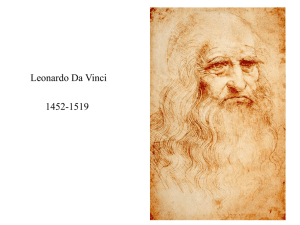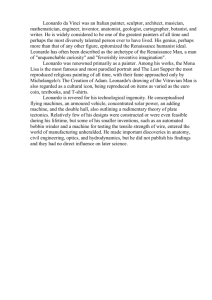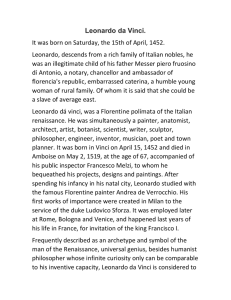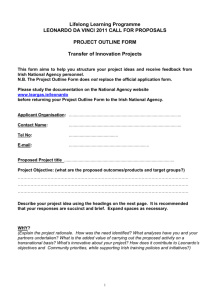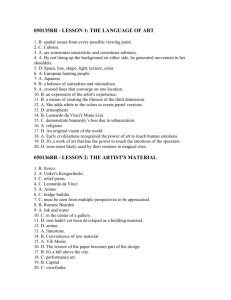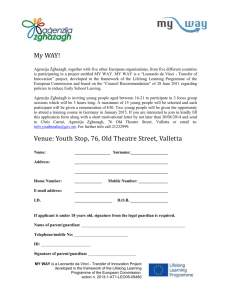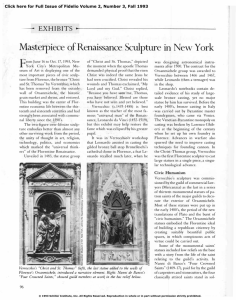People in History Leonardo daVinci
advertisement
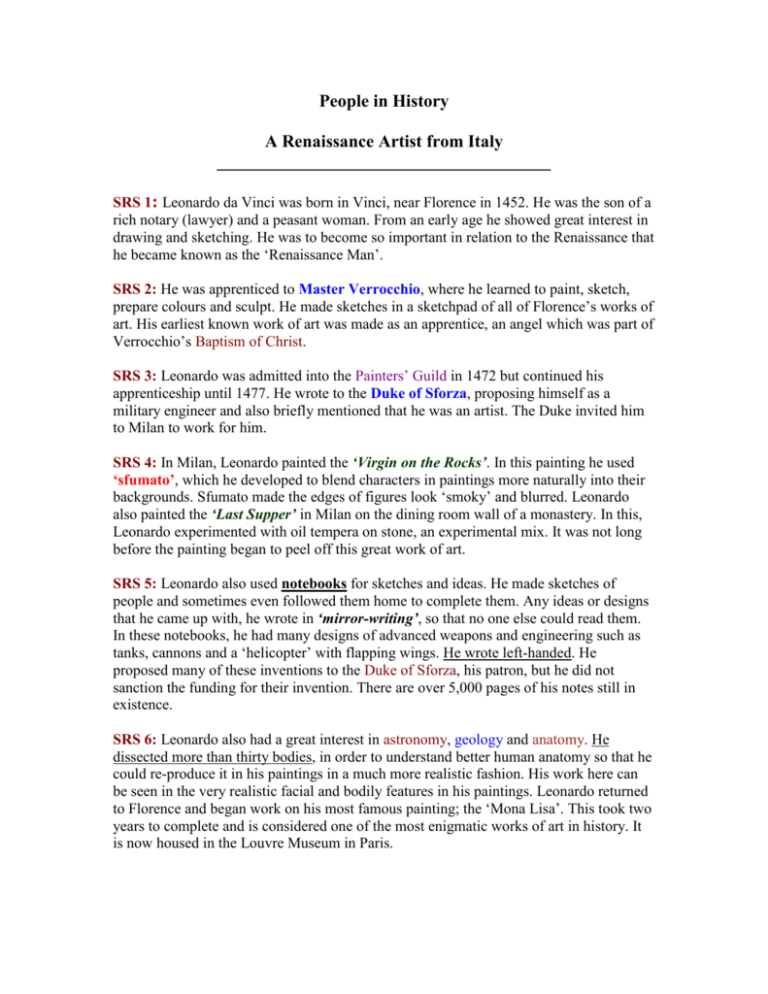
People in History A Renaissance Artist from Italy ______________________________________ SRS 1: Leonardo da Vinci was born in Vinci, near Florence in 1452. He was the son of a rich notary (lawyer) and a peasant woman. From an early age he showed great interest in drawing and sketching. He was to become so important in relation to the Renaissance that he became known as the ‘Renaissance Man’. SRS 2: He was apprenticed to Master Verrocchio, where he learned to paint, sketch, prepare colours and sculpt. He made sketches in a sketchpad of all of Florence’s works of art. His earliest known work of art was made as an apprentice, an angel which was part of Verrocchio’s Baptism of Christ. SRS 3: Leonardo was admitted into the Painters’ Guild in 1472 but continued his apprenticeship until 1477. He wrote to the Duke of Sforza, proposing himself as a military engineer and also briefly mentioned that he was an artist. The Duke invited him to Milan to work for him. SRS 4: In Milan, Leonardo painted the ‘Virgin on the Rocks’. In this painting he used ‘sfumato’, which he developed to blend characters in paintings more naturally into their backgrounds. Sfumato made the edges of figures look ‘smoky’ and blurred. Leonardo also painted the ‘Last Supper’ in Milan on the dining room wall of a monastery. In this, Leonardo experimented with oil tempera on stone, an experimental mix. It was not long before the painting began to peel off this great work of art. SRS 5: Leonardo also used notebooks for sketches and ideas. He made sketches of people and sometimes even followed them home to complete them. Any ideas or designs that he came up with, he wrote in ‘mirror-writing’, so that no one else could read them. In these notebooks, he had many designs of advanced weapons and engineering such as tanks, cannons and a ‘helicopter’ with flapping wings. He wrote left-handed. He proposed many of these inventions to the Duke of Sforza, his patron, but he did not sanction the funding for their invention. There are over 5,000 pages of his notes still in existence. SRS 6: Leonardo also had a great interest in astronomy, geology and anatomy. He dissected more than thirty bodies, in order to understand better human anatomy so that he could re-produce it in his paintings in a much more realistic fashion. His work here can be seen in the very realistic facial and bodily features in his paintings. Leonardo returned to Florence and began work on his most famous painting; the ‘Mona Lisa’. This took two years to complete and is considered one of the most enigmatic works of art in history. It is now housed in the Louvre Museum in Paris. SRS 7: Da Vinci also cultivated interests in geology and nature. He studied how rocks were formed and also devised a way to estimate the age of trees by counting the rings in a cross-section. SRS 8: Leonardo went to France in 1516 at the invitation of the King, Francis I. He died in 1519, with many projects still unfinished. He left a legacy of genius and innovation, most notably for his imagination and pioneering of many different fields of art, natural sciences and invention. The ‘Vitruvian Man’ which he drew in 1487 exemplifies DaVinci’s blending of both art and science, the two driving forces of the Renaissance.
